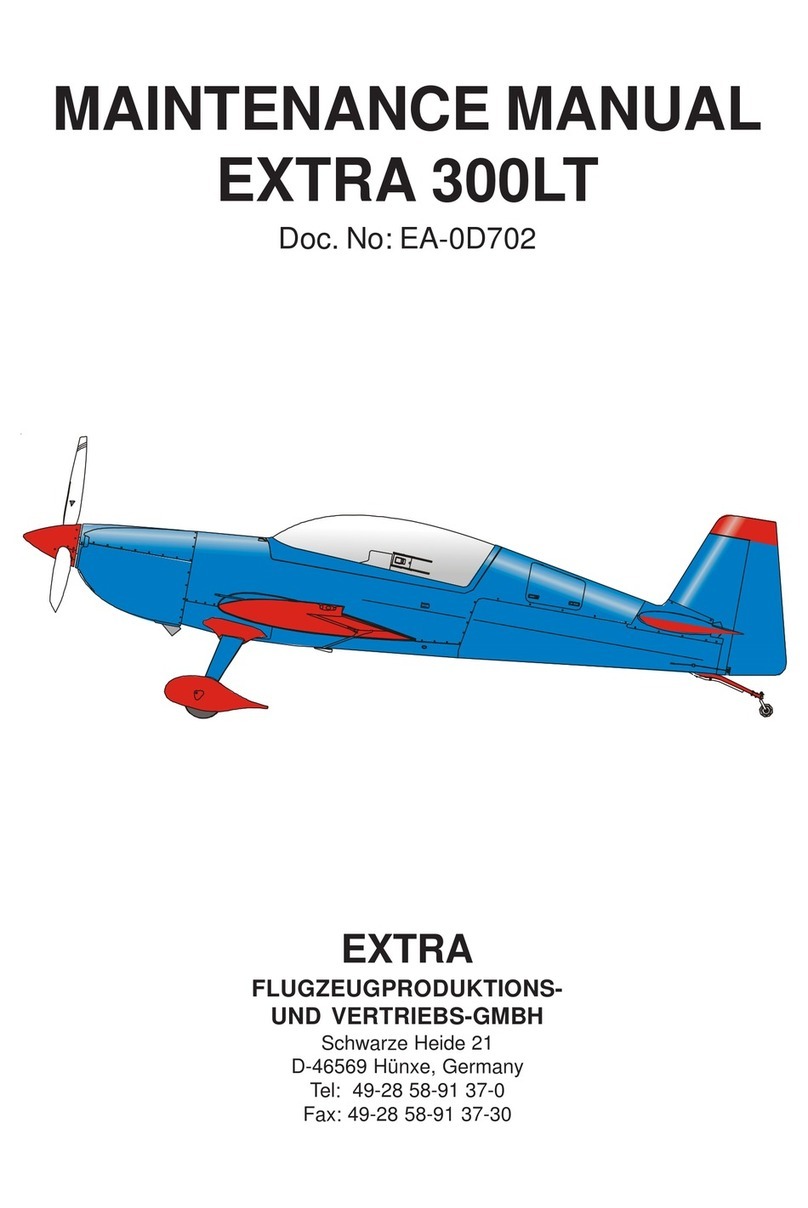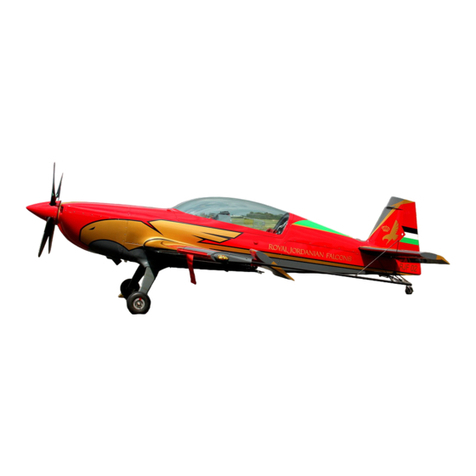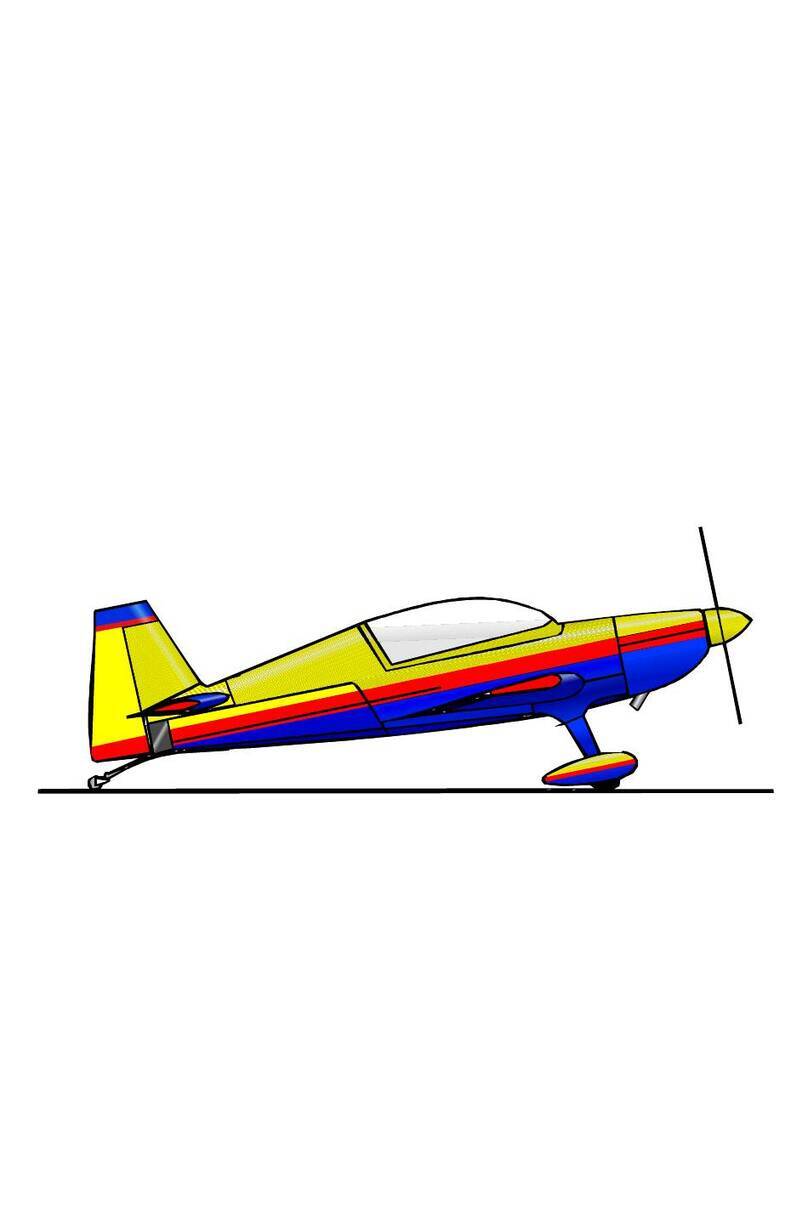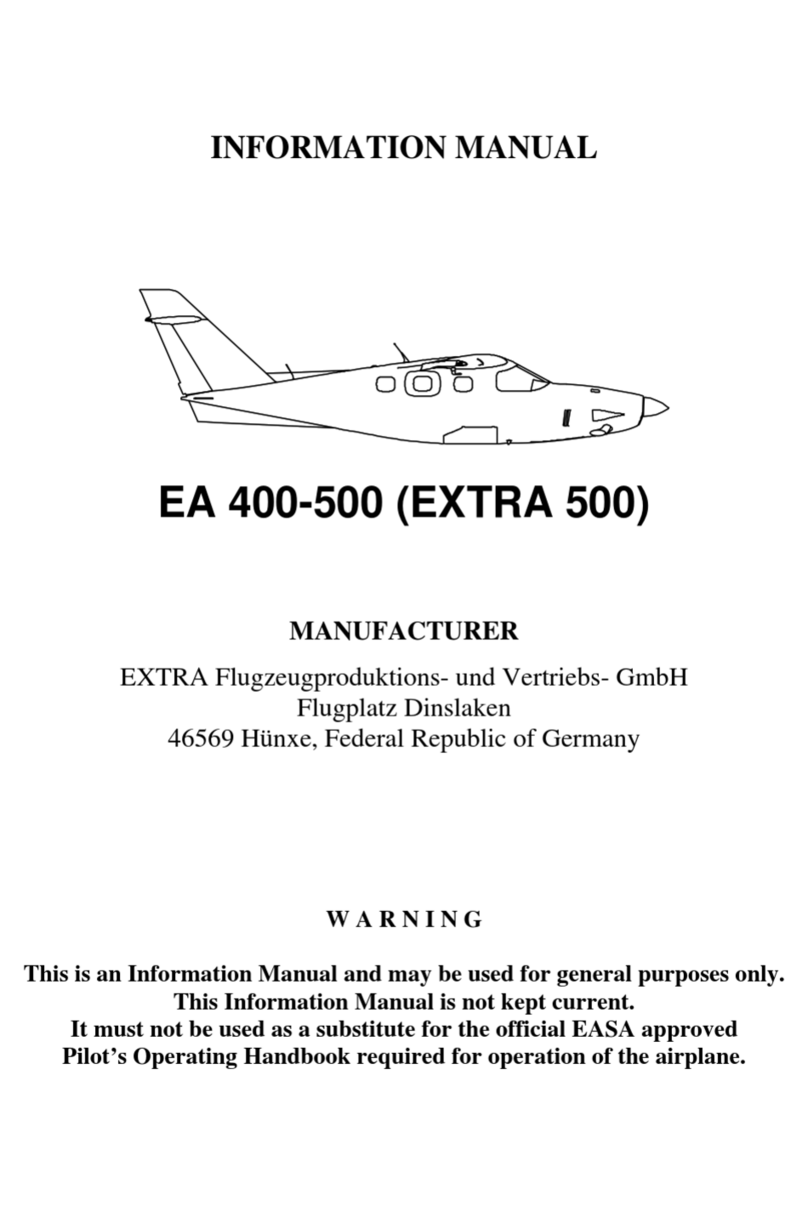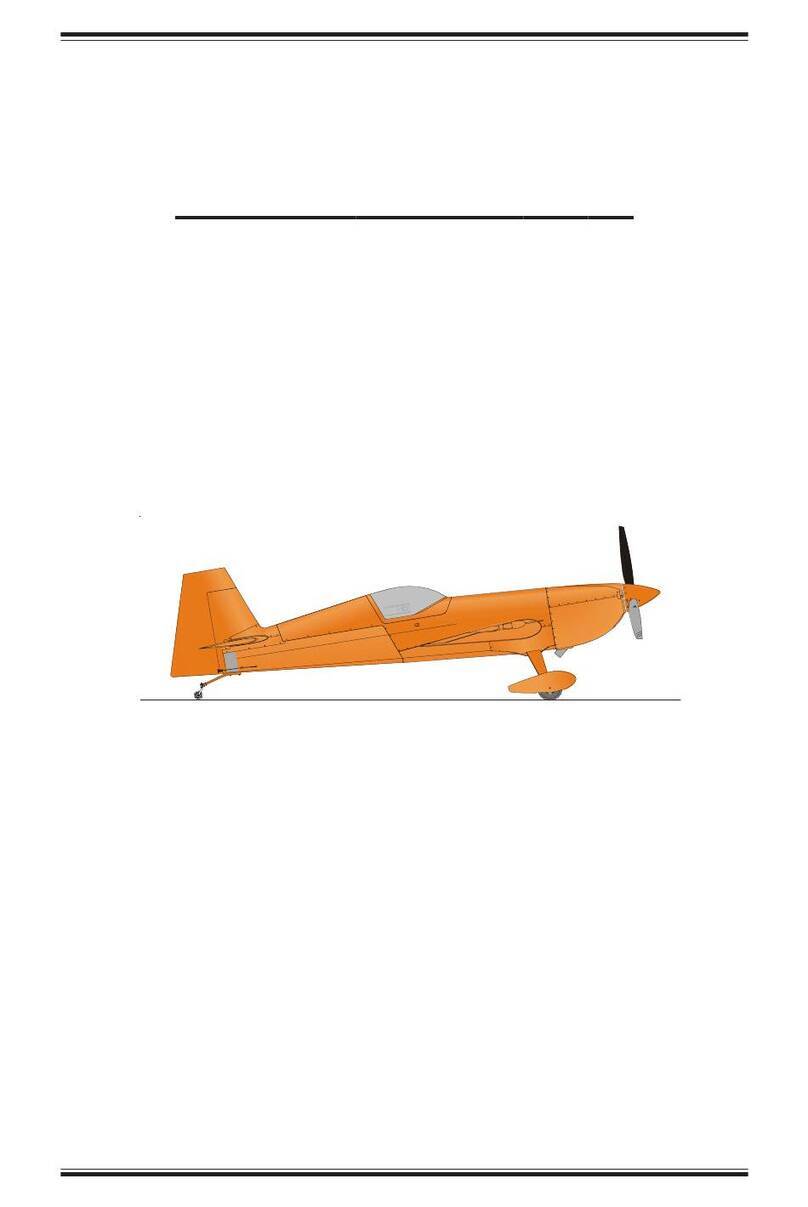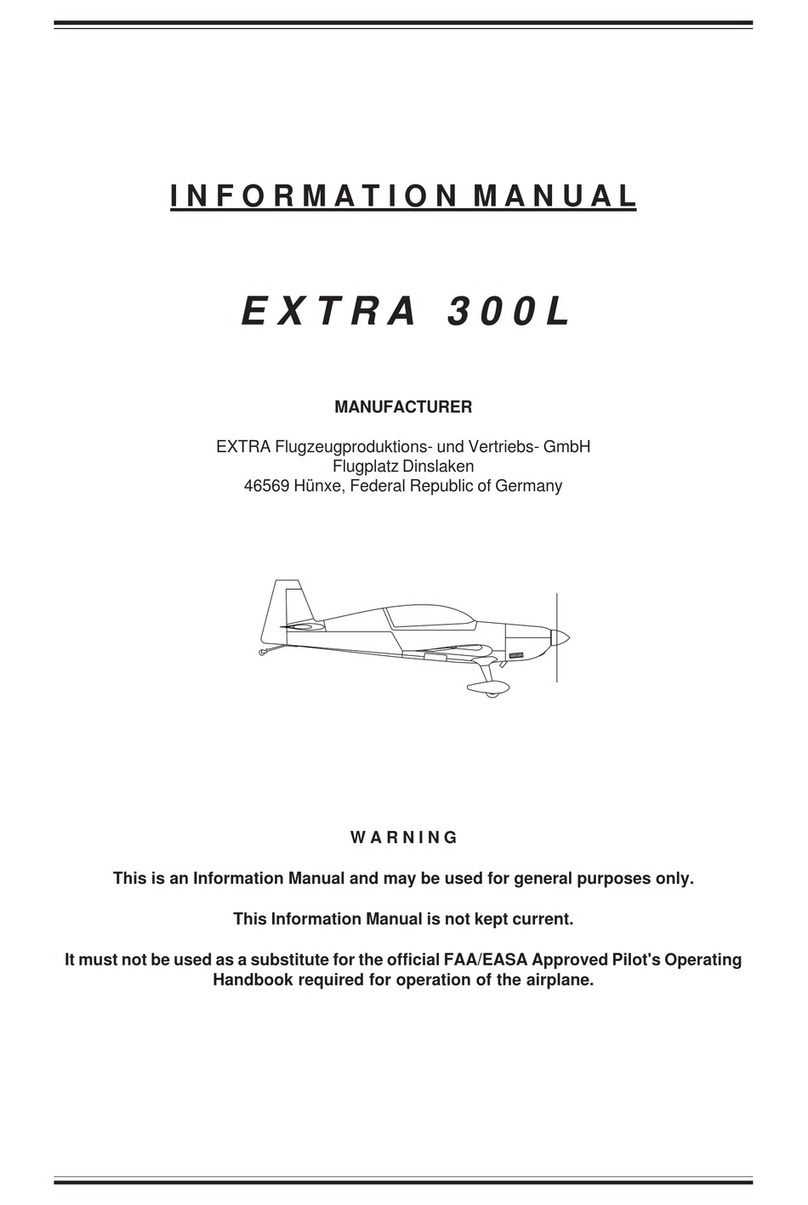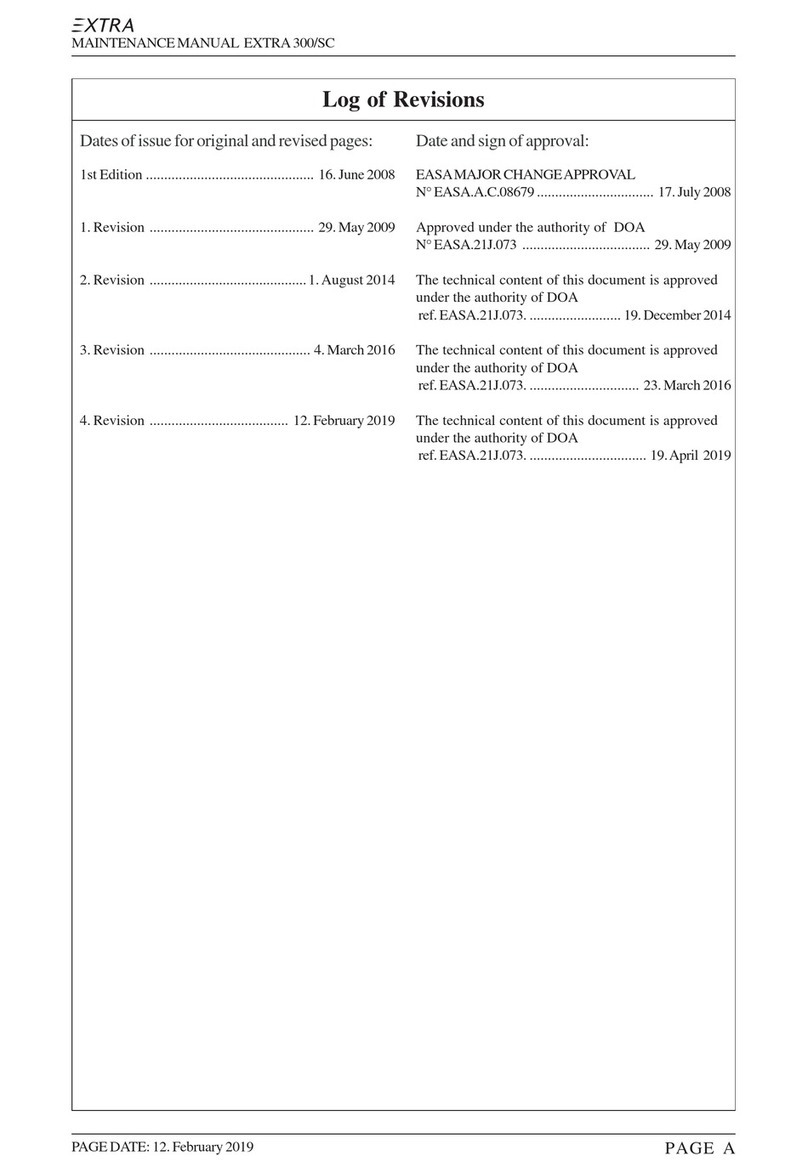
iv Page Date: 19. February 2014
Pilot´s Operating Handbook US
EXTRA330LX
INTRODUCTION
This handbook contains 9 sections, and includes the material required to be furnished to the
pilot by FAR Part 23. It also contains supplementary data supplied by EXTRA Flugzeug-
produktions-undVertriebs-GmbH.
THISMANUALISFURNISHEDTOTHECIVILAVIATIONAUTHORITIESASAPARTOFTHE
CERTIFICATIONMATERIALFORTHISMODEL.
NOTES
This Flight Manual applies only to the aircraft whose nationality and registration marks are
noted on the title page.
ThisFlight Manualis onlyvalid inconnection withthe latestapproved revision.Refer tothe
EXTRAHomepage(directlink:http://www.extraaircraft.com/techserv.asp),wherethePOH
RevisionIndexalways showsthecurrent revisionstatus.
It is the responsibility of the pilot to be familiar with the contents of this Flight Manual includ-
ingrevisionsandanyrelevantsupplements.
Pages of this Airplane Flight Manual must not be exchanged and no alterations of or
additionstotheapprovedcontentsmaybemadewithouttheEXTRAFlugzeugproduktions-
undVertriebs-GmbH/FAAapproval.
Theeditorhas the copyrightof this FlightManual and isresponsible for editionofrevisions/
amendmentsandsupplements.
Amendments,which affectthe airworthinessof theaircraftwill beannounced inthe
mandatoryServiceBulletinsissuedbythemanufacturerEXTRAFlugzeugproduktions-und
Vertriebs-GmbHcoming alongwiththe "AirworthinessDirective"(AD) publicationissuedby
theFAA. Theownerisresponsibleforincorporatingprescribedamendmentsandshould
make notes about these on the records of amendments.
ShouldthisFlightManualgetlost,informEXTRAFlugzeugproduktions-undVertriebs-GmbH,
FlugplatzDinslaken46569Hünxe,FederalRepublicofGermany.
Should this Flight Manual be found, kindly forward it to the civil board of aviation in the country
theaircraft isregistered.

